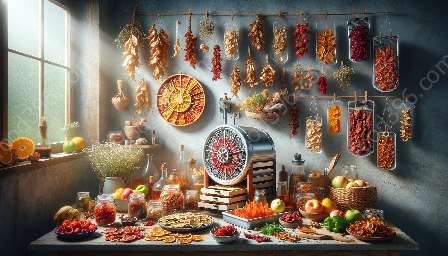Jerky making is a traditional method of preserving and processing meat using drying techniques. This ancient method has been used for centuries to create a nutritious and delicious snack known as jerky. In this article, we will explore the art and science of jerky making, its history, and techniques for creating this attractive and real way of food preservation and processing.
The History of Jerky Making
The history of jerky making can be traced back to ancient civilizations such as the Native Americans and the Incas, who utilized the process of drying to preserve meat for long journeys and periods of food scarcity. The word 'jerky' is believed to have originated from the Quechua word 'ch'arki,' which means 'dried, salted meat.' Over time, various cultures around the world have developed their own versions of jerky, using different seasoning and drying techniques.
The Art of Jerky Making
Jerky making is both a culinary art and a science. It involves the careful selection of the highest quality meat, proper seasoning, and precise drying methods to achieve the perfect balance of flavor, texture, and preservation. Whether using beef, venison, turkey, or other meats, the art of jerky making lies in the meticulous preparation and attention to detail during the entire process.
Ingredients and Seasoning
The key to excellent jerky starts with choosing the right cut of meat. Lean cuts such as flank steak, sirloin, or round roast are commonly used. The meat is trimmed of excess fat and sliced into thin strips against the grain to ensure a tender chew. Once the meat is prepared, it is seasoned with a mix of herbs, spices, and other flavorings. Popular seasonings include salt, pepper, garlic, onion powder, cayenne pepper, and liquid smoke. The choice of seasoning greatly influences the final taste of the jerky.
Drying Techniques
Once the meat is seasoned, the next step is the drying process. Traditionally, jerky was dried using the sun and wind, but modern methods involve the use of ovens or food dehydrators. The goal is to remove the moisture from the meat to prevent spoilage while retaining its flavor and texture. Proper airflow, consistent temperature, and sufficient time are essential for successful drying and food preservation.
Jerky Making and Drying
The process of jerky making is closely connected to the method of drying. Drying is a fundamental technique used in food preservation and processing, as it removes moisture from food to inhibit the growth of microorganisms and prevent spoilage. By utilizing drying methods, such as air-drying, sun-drying, or using specialized equipment like food dehydrators, various foods can be preserved, including fruits, vegetables, and meats, such as in the case of jerky making.
Benefits of Drying in Food Preservation
Drying is a natural and effective method of food preservation that enhances the shelf life of perishable foods. By removing water content, dried foods become lightweight and compact, making them suitable for long-term storage and transportation. Dried foods retain most of their nutritional value, including vitamins and minerals, and can be conveniently rehydrated for consumption. Drying is a sustainable approach to food preservation that reduces food waste and minimizes the need for artificial preservatives.
Conclusion
Jerky making is an attractive and real way of food preservation and processing that has withstood the test of time. It combines the ancient art of drying with the modern science of food safety, resulting in a flavorful and nutrient-dense snack. By exploring the history, art, and techniques of jerky making, we gain a deeper appreciation for this traditional method of preserving and enjoying meat. Whether as a convenient snack on the go or a source of sustenance during outdoor adventures, jerky continues to be a beloved and versatile food that embodies the spirit of resourcefulness and ingenuity.

